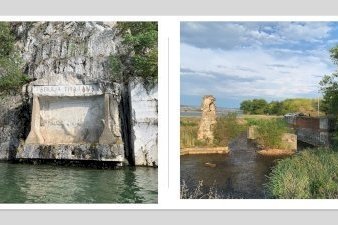Serbia
Danube Limes (Serbia)
The Danube Limes in Serbia comprises 62 sites including fortifications, watchtowers and bridges.
They are mostly out in the open, without being covered by modern settlements. The stretch is 450km long. Parts can be traced back to the 1st century when it was built against the Dacian military presence.
Site Info
Official Information
- Full Name
- Frontiers of the Roman Empire – The Danube Limes (Serbia) (ID: 6475)
- Country
- Serbia
- Status
-
On tentative list 2020
Site history
History of Danube Limes (Serbia)
- 2020: Revision
- Renomination of Frontiers of the Roman Empire (WHS FRE) (2015)
- 2018: Added to Tentative List
- .
- Type
- Cultural
- Criteria
Links
All Links
No links available.
Community Information
- Community Category
- Archaeological site: Ancient Rome
- Secular structure: Military and Fortifications
Travel Information
Recent Connections
News
No news.
Community Reviews
Show full reviews
As we already know, these serial locations in Serbia will be inscribed one day as an extension of the WHS that Germany, Austria and Slovakia already share. Without any surprise, the archaeological remains are globally poor and underwhelming (in my opinion, only Hadrian Wall should have been inscribed as the best Roman limes in Europe ; not even to mention the inscription of the different types of limes under different WH properties). We happened to see some of these sites without actually looking for them while touring Serbia in summer 2022, and still they tell something of this distant past that is worth mentioning I believe.
Danube river was the border at that time. The “tabula trajana” is a rock carved text on the order of Emperor Trajan in one of the narrowest place of the valley (we are here in the “Iron gates”, or Djerdap national park, also a TWHS). Dated from 100 AD, it lists some of the official titles of Trajan and reminds that he order the maintenance of the roman road along the Danube, which, at that place, was half carved in the rock and half supported by wood structure, to make large enough. The tabula can only be seen from the water and we came close to it during a short boat trip, which prime purpose was to enjoy the “iron gates” landscape. You could maybe see it from the Romanian side as well : there are small boats operating similarly from there, but …
Keep reading 0 comments